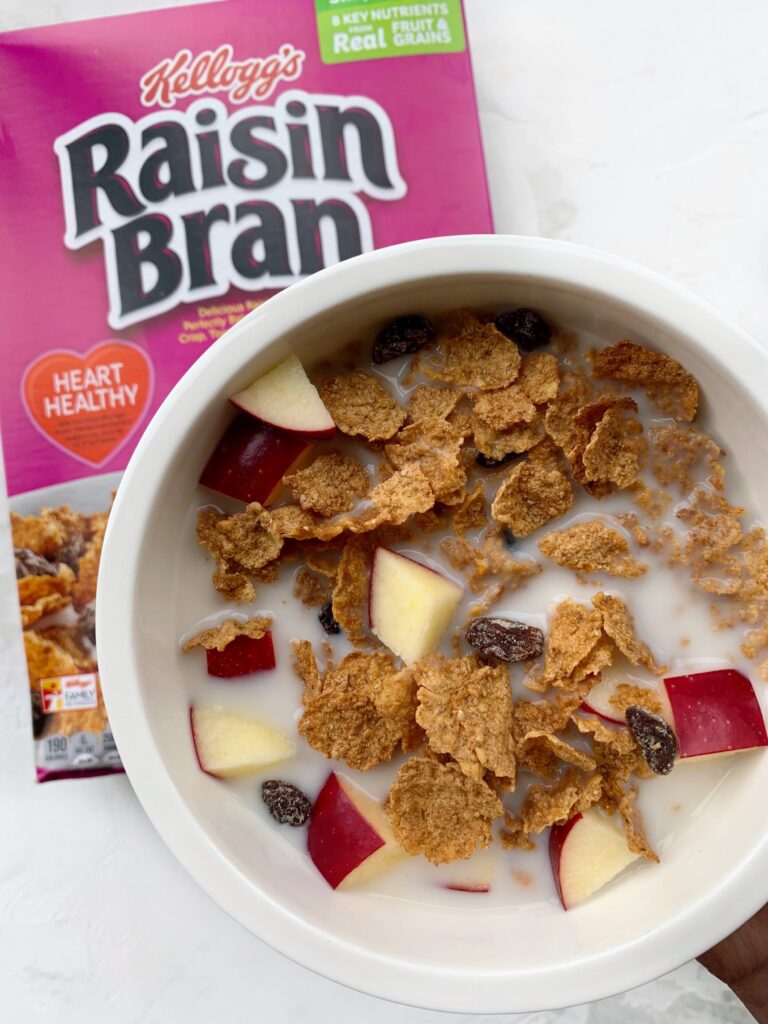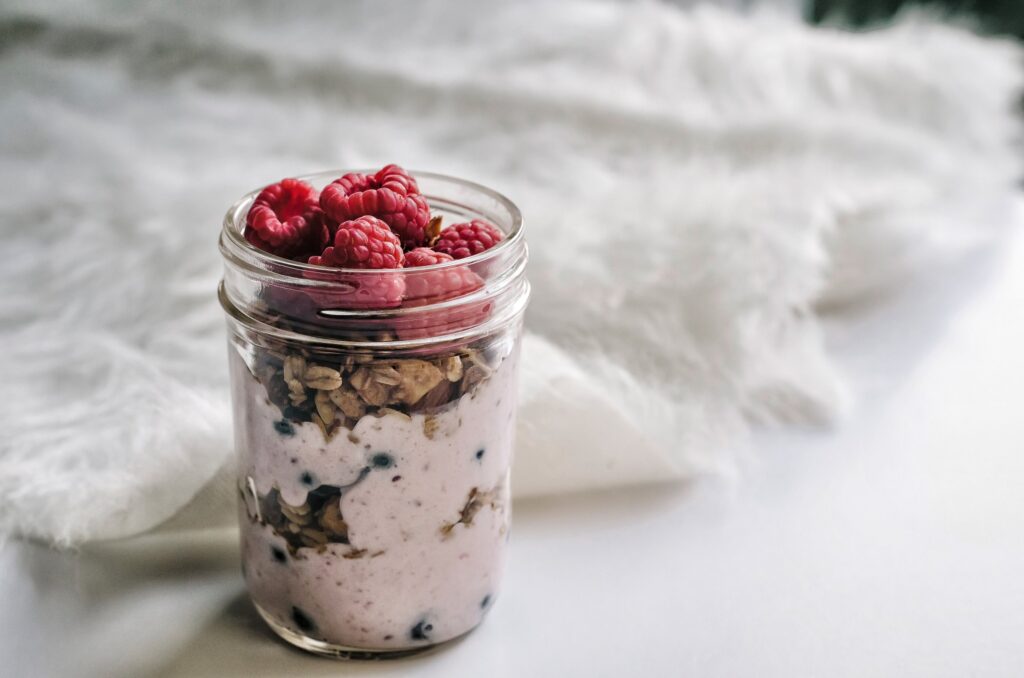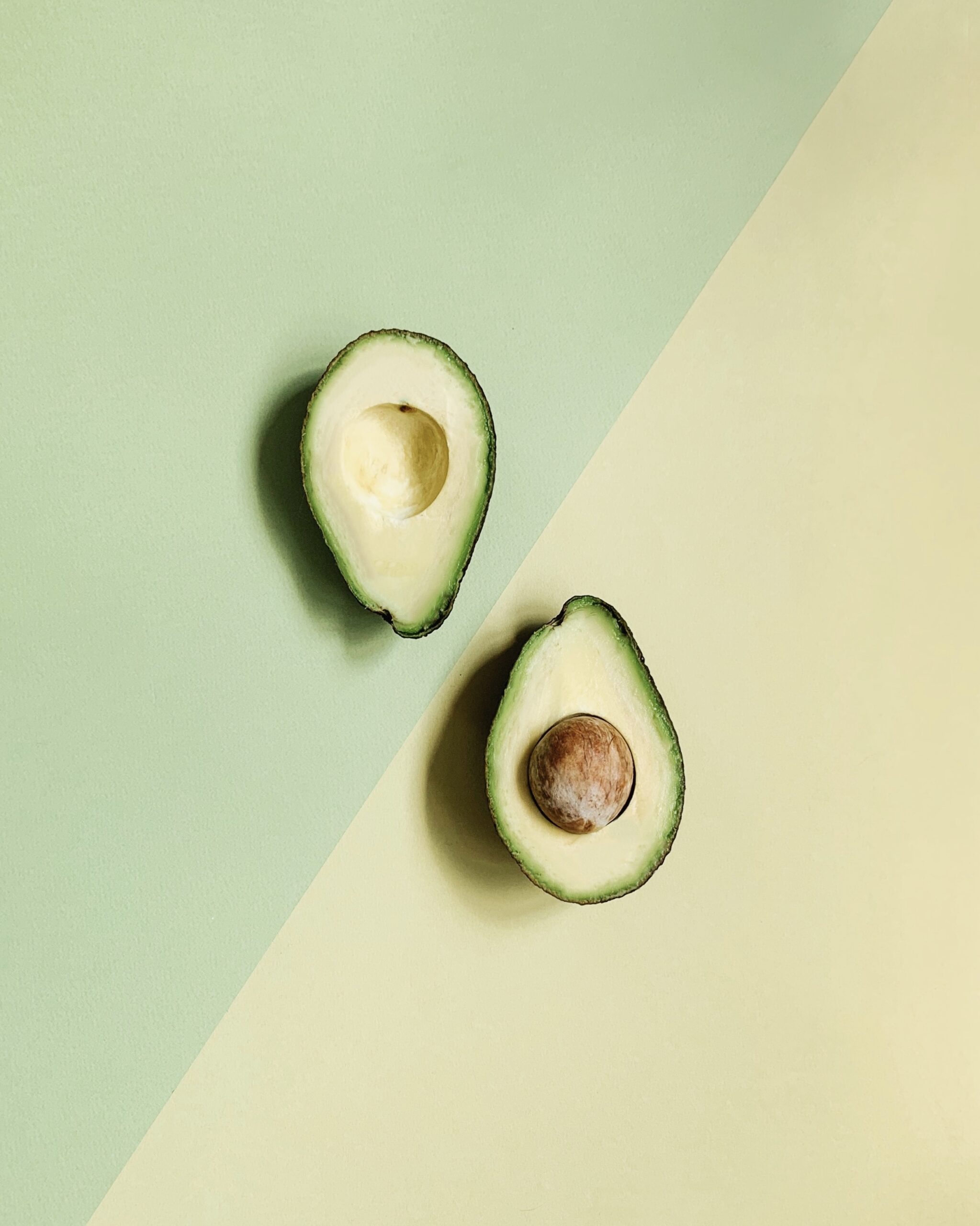
If you were born in or before the 80’s or early 90’s, you probably remember the dietary fat craze. Fat in food was to be feared, and everything was low-fat. Anyone remember that green box of low-fat Snackwell’s cookies? Growing up, my pantry was always stocked with them!
Luckily, we’ve since overcome this unnecessary fear of dietary fat. The food industry, and most of us, now knows that fat in the diet is actually really beneficial for multiple reasons. Dietary fat helps keep us full. It’s heart healthy. It’s good for our brains. But, what is it? And what are the best ways to get more of it in your diet?
Because my recent breakdown on carbs was so helpful, I wanted to do the same for dietary fat. Get ready to learn exactly what dietary fat is, different types of fat, the best food sources and easy, healthy ways to add more to your diet.
What is dietary fat?
To start, fat is one of the 3 main macronutrients that all foods are made up of, along with protein and carbohydrates. It’s essential that our diet is made up of a mixture of all 3 of these.
Dietary fat is calorically more dense than both protein and carbs. While protein and carbs both contain 4 calories per gram, fat contains 9 calories per gram. This does not mean fat is unhealthy, it simply means fat is denser. This is the reason why a high fat food, like an avocado, although small, is still about 240 calories.
While fat has many functions, it has a few main and necessary ones. Dietary fat gives our bodies energy and supports cell growth. It helps keep our bodies warm and protects our organs. It helps to absorb fat-soluble nutrients (like vitamins A, D, E and K) and produce hormones. In a nutshell, we need to eat fat.
It’s important to understand that fat is not our main source of energy – carbs are. But, when the body needs energy because it’s not getting enough, various hormones signal fat to be released from our peripheral tissue. So while it’s not our preferred source of energy, it’s there to help out when we need it. It’s crucial that we always have enough ready to go.
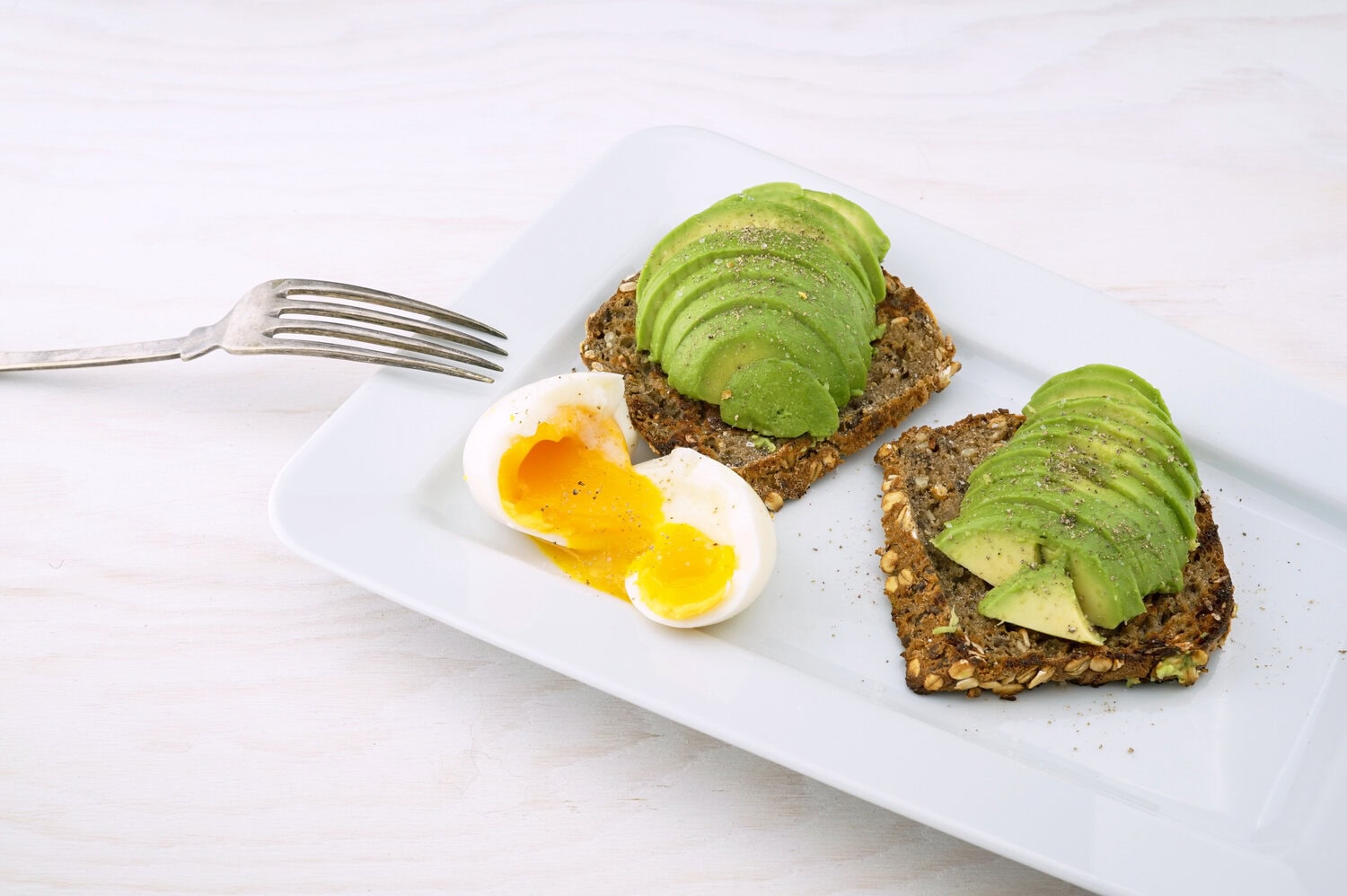
Types of dietary fat
There are 4 main types of dietary fat: saturated fat, unsaturated fat (classified as mono- and polyunsaturated fat), and trans fat.
To understand the difference between these 4, we need to first do just a quiiiick chemistry lesson.
Fat is made from carbon, hydrogen and oxygen bonds. Their classification depends on the structure of these bonds.
When no double bonds are present, fat is considered saturated fat. When double bonds are present, fats are unsaturated. A monounsaturated fat (also called a MUFA) has 1 double bond. A polyunsaturated fat (also called a PUFA) has more than 1 double bond. This is how each of these fats naturally occur in foods.
Additionally, often times, hydrogenation is done to create fat with certain properties. It prevents food from going rancid, makes food last longer on the shelf and prevents break down from heat. The greater the unsaturation, the lower the melting point (and more solid) a food is. So, an unsaturated fat can be turned into a saturated fat via hydrogenation.
This is also how trans fats are created. This type of fat is pretty much never naturally occurring – trans fats are manmade. Trans fats are made by hydrogenation – or adding a hydrogen atom – to liquid fat to make it a solid fat at room temperature.
Saturated fats are typically considered unhealthy fats. They’re solid at room temperature (think: butter or beef fat). These types of fats have been shown to decrease our HDL (or good) cholesterol and increase LDL (or bad cholesterol). While current research is conflicting regarding saturated fat, most research agrees with limiting our total intake of saturated fat.
Like many types of saturated fats, trans fat is an unhealthy fat. Trans fat has been associated with decreased HDL cholesterol, increased LDL cholesterol and increased inflammation. In fact, trans fat is now known to be so unhealthy, that in 2006, the US banned restaurants from serving food with it. Since then, in 2015, the FDA found trans fat so unsafe to eat that it gave the food industry in the US 3 years to remove it from foods completely. By 2018, no food should have been made with trans fat. As a result, it’s pretty rare to see a packaged food made with trans fat nowadays in the US.
Alternatively, both monounsaturated and polyunsaturated fats are known as healthy fats. They’re beneficial for our hearts, brains and more.
There are 2 main, essential polyunsaturated fats that you’ve probably heard of: omega 3 fatty acids and omega 6 fatty acids. Omega 3 fatty acids are named because their double bond is 3 atoms away from end carbon in their structure. In omega 6 fatty acids, the double bond is 6 bonds away.
These fats are essential – meaning we cannot make them and must get them from food. Additionally, there are 3 main types of omega 3 fatty acids: EPA, DHA and ALA. Because there’s only so much I can cover in one blog post, I won’t go into detail about these 3 acids (yet!), but for now, just know that they’re beneficial and necessary.
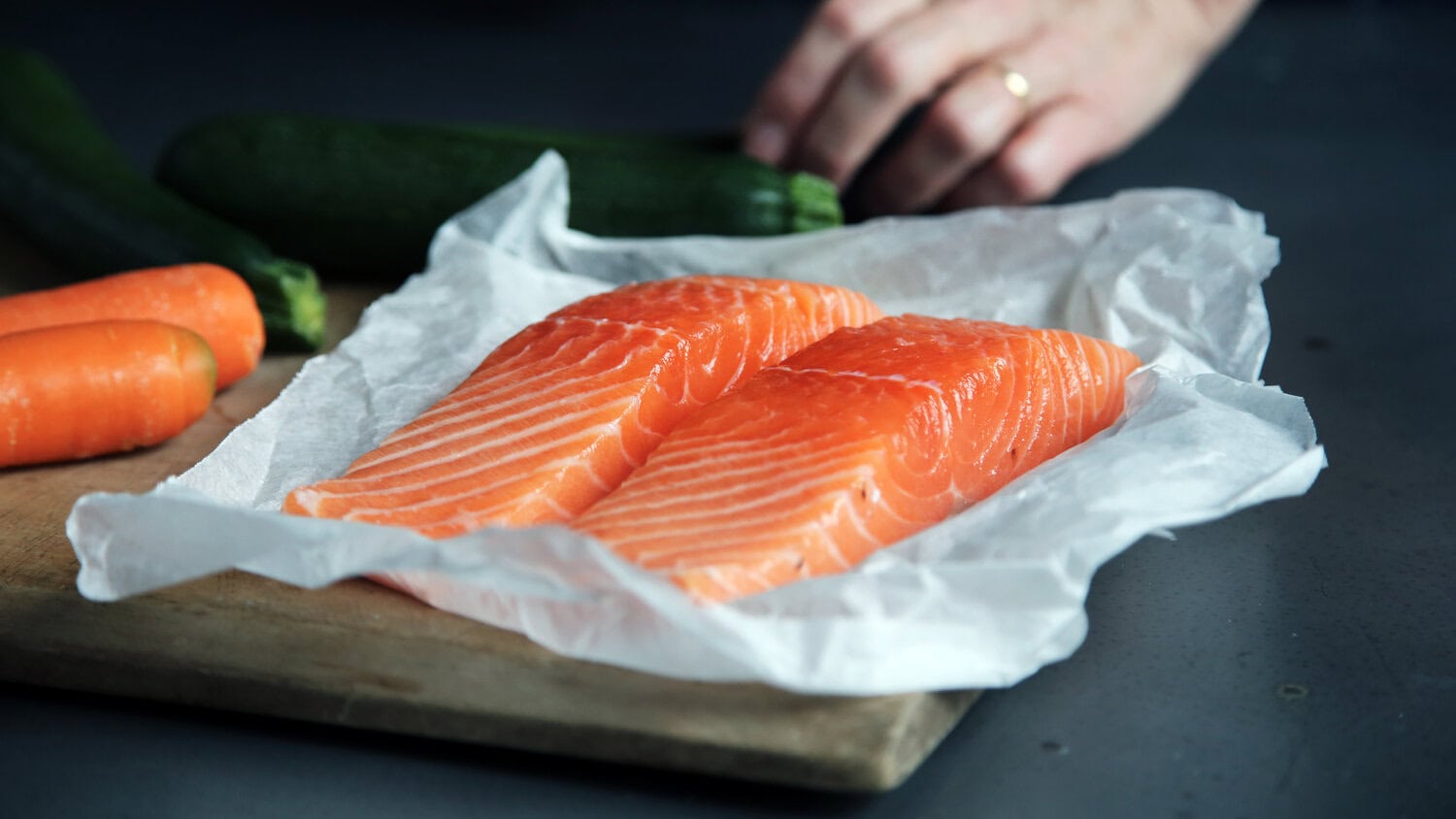
Benefits of dietary fat
Unsaturated fat has been shown to be incredibly heart healthy. Both omega 3’s and omega 6’s have different benefits for our bodies.
Omega 6 fatty acids are required for growth, maintaining skin and hair, regulating carbohydrate metabolism and reproduction.
Omega 3 fatty acids contain even more benefits. They’ve been shown to reduce our triglyceride levels, decrease risk of thrombosis (decreasing risk of heart attack or stroke), prevent arrhythmias, slow the growth of plaque on the heart, lower blood pressure and decrease inflammation. In short, omega 3 fatty acids are incredibly heart healthy.
On the flip side, as I mentioned above, saturated fat has been shown to have negative effects on our health. Saturated fat can increase LDL (or bad) cholesterol, decrease HDL (or good cholesterol) and lower total cholesterol.
It’s important to note that the fats in most foods contain a mixture of both saturated and unsaturated fat. So, while something like olive oil is mostly an unsaturated fat, it also does contain some saturated fat too.
For this reason, it’s recommended that we focus on choosing mostly unsaturated fats, and then, mostly on omega 3 fatty acids. The recommended ratio of omega 3 to omega 6 fatty acids is less than 4:1. But don’t worry – this isn’t something you need to meticulously count. Because of the way most foods are made up, if you simply focus on getting enough healthy fats – and specifically, omega 3 fatty acids – in your diet, your ratio of omega 3 to omega 6’s will be just fine.
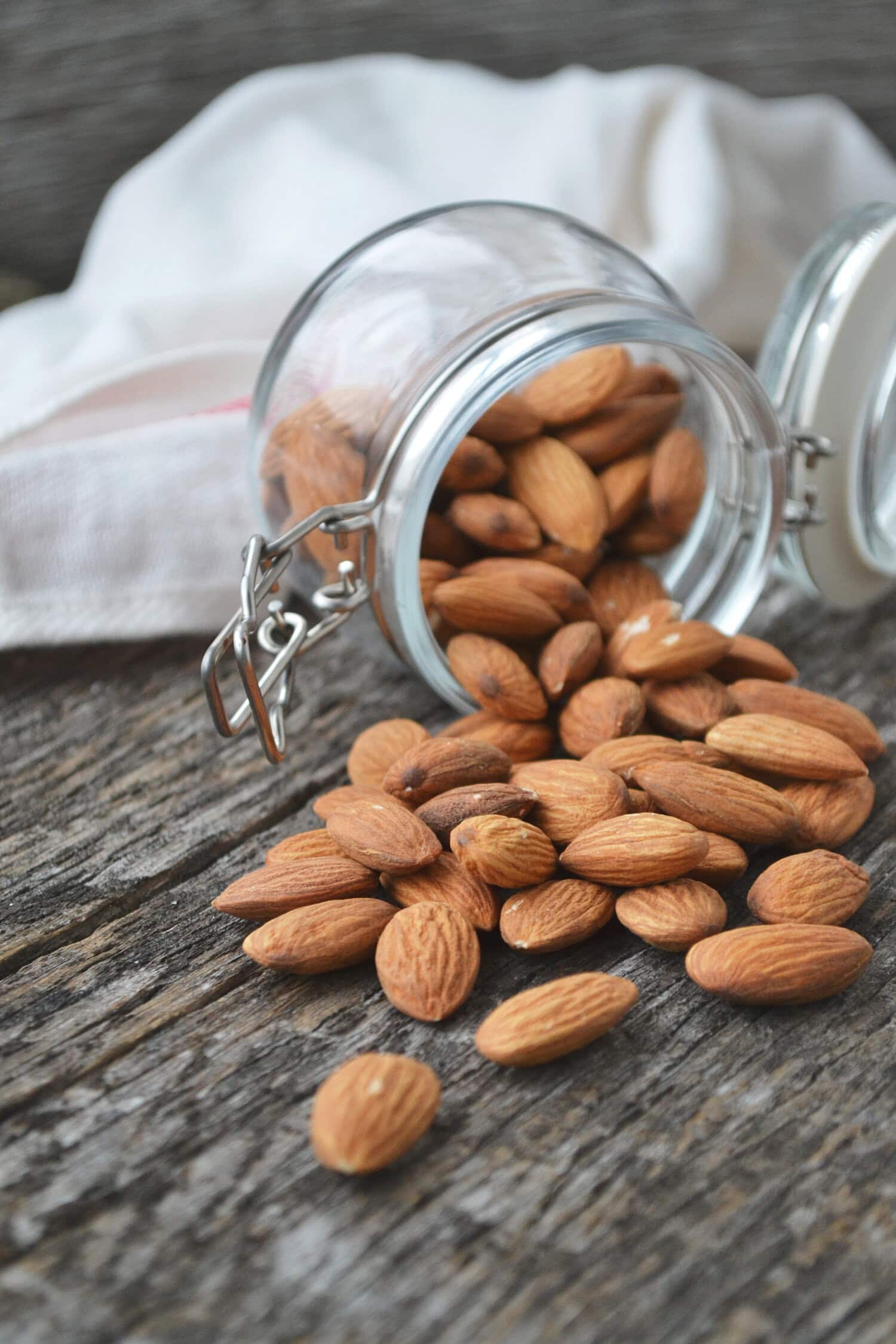
Food sources
Saturated fat is found in mostly animal products – meat and dairy. I typically tell clients that saturated fat can be found in 3 main food sources: meat, full fat dairy and fried food.
Red meat is a big source of saturated fat. That white marbling that you see on red meat is the saturated fat. Similarly, the skin on chicken also contains saturated fat. So, a lean cut of meat or chicken without the skin doesn’t contain much saturated fat.
Saturated fat is also in foods like full fat dairy and butter. A quick fix: by choosing lower fat dairy options, a lot of the saturated fat is removed from these foods. I typically recommend that clients choose a 2% dairy as opposed to full-fat or non-fat. Some fat is needed to keep us full. And honestly, a lot of non-fat dairy products just don’t taste great. Alternatively, if a client prefers full fat Greek yogurt, I tell them to keep eating it. The amount of saturated fat saved by switching to 2% is pretty negligible. In the long run, as long you focus mostly on healthy, unsaturated fats, a little full fat dairy in your diet is a non-issue.
Trans fats are mostly found in packaged foods like chips, cookies, pre-made dough and other baked goods. But, like I mentioned above, you’d be pretty hard pressed to find trans fat in packaged foods in 2020. Now that most people are aware of the harm of trans fats (plus, now that the FDA has banned them!), most food companies aim to stay away from them.
Finally, unsaturated fats are found in foods like: nuts (like walnuts, almonds, peanuts, etc.), nut butter, seeds (like pumpkin seeds, sunflower seeds, chia seeds and flaxseeds), avocados, fatty fish (like salmon, tuna and herring) and oils, like olive oil and avocado oil.
Foods high in omega 3’s include fish like salmon, tuna and sardines, walnuts, flaxseeds, chia seeds and avocado. Foods high in omega 6’s include sunflower seeds, pumpkin seeds and oils like sunflower and safflower oil.
Healthy ways to add more fat to your diet
You know now that there are a multitude of benefits to having a good amount of unsaturated fat in your diet. It’s actually kinda crazy to think about the fact that just 20ish years ago, we were obsessed with low-fat foods! Dietary fat is so very beneficial.
As you might’ve guessed, I don’t believe in obsessing over dietary fat in your diet. Again, all fat-containing foods will also contain a mixture of different types of fat. Instead of overanalyzing the amounts and types, aim to increase your intake of unsaturated fat, and for the most part, eat less saturated fat. Replacing saturated fat with unsaturated fat in the diet has been shown to positively benefit cholesterol levels and reduce the risk of heart disease.
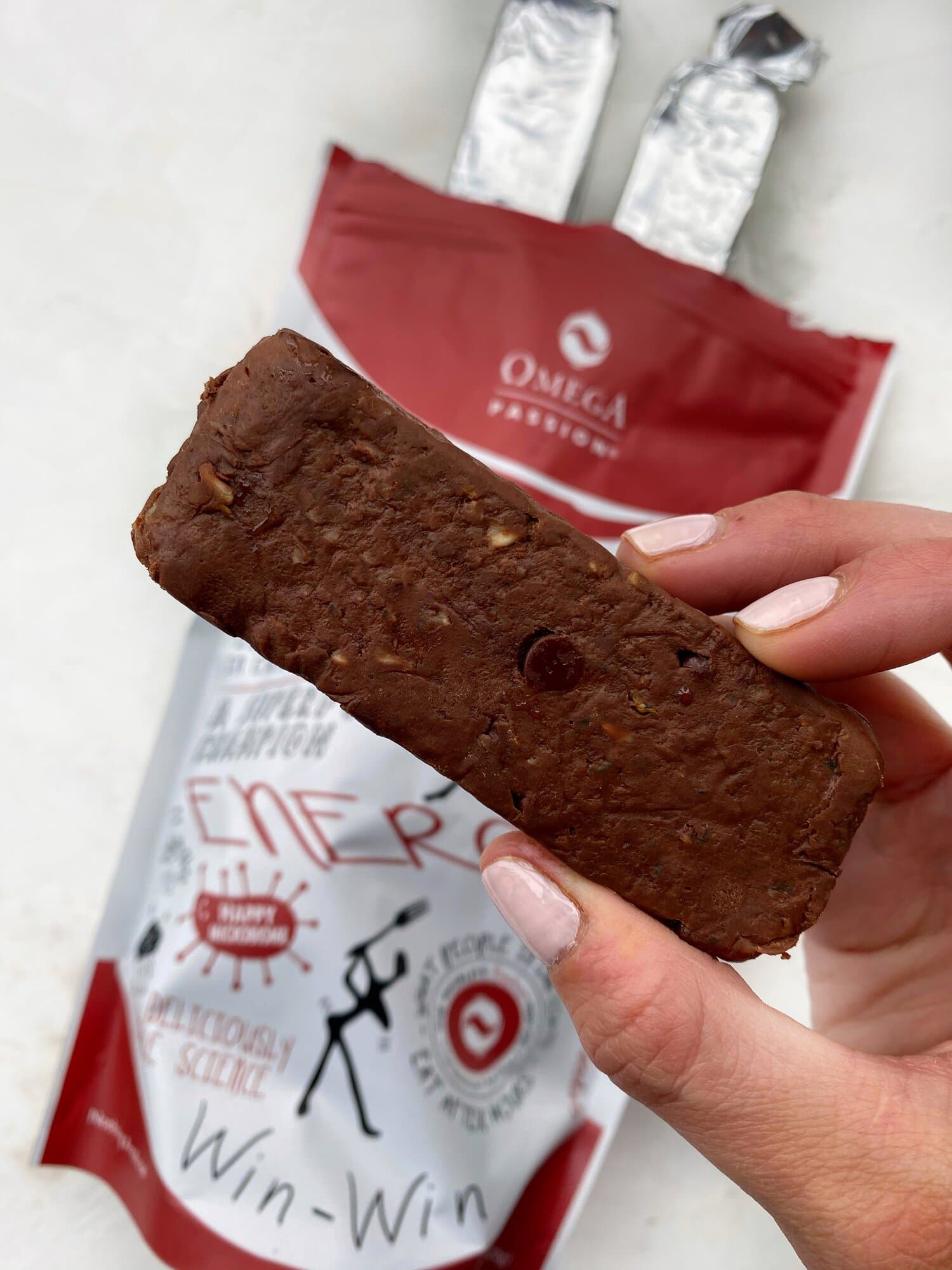
If you’re looking for ways to add a little more healthy fat to your diet, here are some of my favorite simple ways to get started:
- Cook with olive oil or avocado oil. Both have high smoke points – meaning they can be cooked at high temperatures – and are made primarily of monounsaturated fats. I use olive oil to cook pretty much everything. Plus, these oils help increase our absorption of foods containing fat soluble vitamins A, D, E and K. This means that making something like spinach, carrots or broccoli with olive oil helps you to better absorb the vitamins in those veggies.
- If you’re not already eating peanut or almond butter, get on it! Neither one is “better” than the other, they simply have different nutrient makeups. Try almond butter in your morning oatmeal, a banana with peanut butter as a snack, or a good old peanut butter and jelly sandwich.
- Try an Omega3 Innovations’ Omega Passion bar. These bars are my new obsession. They’re made with whole food ingredients like yogurt, oats, walnuts and dark chocolate, are fortified with heart healthy cod liver oil and vitamin D3, and are a good source of protein (4g), fiber (5g) and healthy fats. One bar has 10 grams of unsaturated fat – made up of a mix of DHA and EPA, two essential omega-3 fatty acids. For reference, that’s as much omega 3 as eating a 3 ounce portion of salmon! As you can imagine, their nutrient makeup makes them super filling, too. And they also legit taste like chocolate fudge! I’ve been carrying them with me on busy days and having a half or whole bar to tide me over between meals.
- Add some avocado to pretty much anything. Mash it on toast, add diced avocado to your salad, or pair with roasted veggies (my personal favorite!). Avocado is a delicious way to up your healthy fat intake.
- Aim to eat fatty fish at least twice per week. Fatty, cold-water fish like salmon, sardines, tuna and mackerel are loaded with healthy fats. Eating these fish about twice per week has been associated with multiple heart health benefits.
Like with anything else, there is so much more I could get into about fats: triglycerides, DHA/EPA/ALA, fat soluble vitamins, ketosis, and more. But for now, I think the most important takeaway is this: we need fat in our diet. And in case, for any reason, you still believe this age-old myth: eating fat does not make you fat.
Dietary fat protects our hearts, our organs, our cells and our hormones. It’s so incredibly beneficial. If you feel like you could use a little more fat in your diet, simply start adding olive oil, peanut butter and avocado to your meals. Check out Omega3 Innovations’ amazing Omega Passion bar as a snack or even for breakfast. I can guarantee: your body and bloodwork will all reap the benefits of these simple additions.
This blog post was created in partnership with Omega3 Innovations. All thoughts and opinions are my own.


